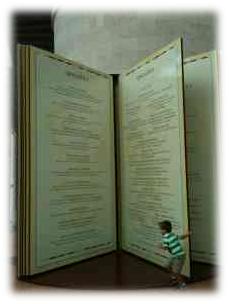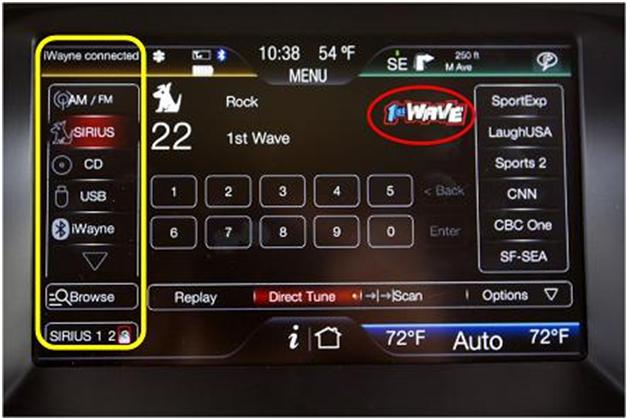I have heard comments from a number of people – in person, in email, and on Twitter – that it’s time to stop this discussion about the “connected car” and get back to business.
Actually, now that that conversation about the demise of AM/FM in cars is behind us, it’s precisely the time to START talking about the “connected car” and what it means to radio.
Aside from the dustup at Convergence and its aftermath, this is a major issue for broadcast radio. In fact, some might logically contend that it’s the most paramount challenge facing radio.
I’m one of those people. I’ve been convinced of this for more than a couple years as I’ve watched our mobile business grow, as I saw people connect smartphones and iPods in cars during our “Goin’ Mobile” ethnographic study, since I’ve seen our Techsurvey data that shows the sharp skew toward in-car listening (and away from in-home), when I leased a vehicle with Ford SYNC, and because we all know about the critical importance and heft of the auto advertising sector for radio.
The facts are indisputable and the reasoning is consistent. When you listen to the automakers talk about their priorities for the “digital dahsboard,” from Ford to Chrysler to Mercedes to General Motors to Toyota, it goes something like this:
- We want to give consumers the infotainment options they want and demand
- We want to provide a great user experience
- We want to do all these things in a safe environment
And they are thrilled that broadcast radio is a key option. They respect what radio brings to their “center stacks.” They believe in the value and relevance of hometown radio programming, information, and DJs. They believe that HD Radio levels the playing field by creating a more seamless interface as consumer navigate from satellite to iPods to Internet radio to broadcast radio – and all variations in between.
But they never talk about an entitlement for radio dominance in cars. Along with pushbuttons and cassette decks, those days are done.
The automakers are perfectly content to give consumers lots of choice and let Darwinian-driven choice take over. May the best content win.
And that’s where radio needs to rethink its assumptions and givens.
I have long talked about radio’s two wars. We continue to be brilliant and tenacious about killing the other Country station in the market, ganging up on that big Classic Rock station, and packaging all our stations to force the other cluster off the buy.
But in the process, we’re missing the boat on that second war – The Big War. That’s the battle that features a billion channels. Because that’s what we’re truly up against. There is no more scarcity – a condition where radio thrived. Instead, there is abundance. And that’s why radio needs to step up its game, come to grips with and amplify what it does well, and use its assets intelligently and strategically in order to compete in a much more crowded, diverse, consumer-driven marketplace.
Every radio brand needs to answer the consumer question, “Why should I listen to you?”
And if there’s no ready, obvious response, then we’re looking at radio stations whose existences will be measured in years – or perhaps even months. Because as automaker after automaker bakes in Spotify, Siri, Aha, Wi-Fi, and every other conceivable option, consumers w ill enjoy more and more stations and outlets to choose from.
ill enjoy more and more stations and outlets to choose from.
Now we know that infinite choice can be intimidating. That’s why I hate going to the Cheesecake Factory. The food is fine, but a menu that is more than 10 pages long containing 200 items is no longer interesting to me. In fact, it’s stressful, intimidating, and too time consuming to bother with. Consumers like simple, clear choices, and so in some ways, AM/FM radio may win some battles by default – because it’s too difficult to consider all those myriad choices.
During one of the many interviews we conducted at CES this past January, we got a walk-through of Chevy’s newest digital dash offering. The guy who gave us the tour started tuning in radio stations from Norway. And he told us about which stations were “trending” on TuneIn. Now maybe some people like to listen to audio entertainment with that sense of adventure, but I’m betting that most are more comfortable with a few, clear choices that they can navigate.
But if hometown radio stations are going to make the Final Four in the digital dash (OK, maybe the Sweet 16), they may have to rethink why consumers would choose them in the first place.
Playing it safe, toeing the line, doing what we’ve always done is what makes a brand forgettable in the new reality of audio abundance. No one is going to talk about a station that’s been doing the same thing for a couple of decades – unless, of course, it’s remarkable.
A number of years ago, Jon Stewart was interviewed in Wired, and when asked how his fans would access his show in the future, he said this:
“We make the doughnuts; we don’t drive the trucks.”
The big conversation for radio companies has less to do with the delivery platforms and the gadgets. It has everything to do with the quality of donuts we’re making.
It will be a battle for relevance, and given radio’s long association with cars, it’s a fight we’d better well win.
- A 2020 Lesson?It Could All Be Gone In A Flash - April 24, 2025
- How AI Can Give Radio Personalities More…PERSONALITY - April 23, 2025
- Can Radio Afford To Miss The Short Videos Boat? - April 22, 2025





Why do we have to keep telling broadcasters its all about the content, presentation and selling the show? Deliver cheap no care and get the same in return. HD would be great if there were stronger formats and easier ways to receive them. And, are we trying to connect with the 45+ money boomers, any more?
With all the distractions around gadgets and technology, focusing on content is critical. Thanks for reminding us of the basics, Clark.
Harvard Biz Prof Clay Christensen says it’s when a newcomer enters the market from the bottom, not threatening the legacy companies (until it’s too late) that they gain a foothold in the market. Makers of high fidelity radios with powerful vacuum-tubes felt no threat by the poor audio quality of the transistor and missed a technology shift that eventually killed many of them. Few felt threatened by the quality of the original iPod (introduced at the same time as HD Radio, by the way) and yet, with the convenience of having a 1,000 songs in your pocket — all of a sudden the game changed again. And the real genius was the iTunes store that allowed even people with blinking 12:00s on their VCR to download songs to their iPod.
The scribes laughed at the printing press too. One of history’s ironies is the member of the cloth who wanted to get out a message about saving scribes and the importance of the hand written text. To get his word out fast to the masses, he printed his message on…..you guessed it…..a printing press.
Having entered the higher educational field about four years ago now, I see the same things going on here. MOOCs and Online Learning are looked down upon by those who teach in brick & mortar buildings. Didn’t Borders say that Amazon was not going to last? And Blockbuster didn’t worry about Netflix.
I lived through FM was going to kill AM radio, the 8-track was going to kill radio, the cassette was going to kill radio, the CB radio was going to kill radio, the CD changer was going to kill radio, the cell phone was going to kill radio and Satellite Radio was going to kill the now labeled “terrestrial radio.” In each case the battle was taking place primarily in the car (or truck or boat or whatever mobile you want).
In each case, LOCAL RADIO offered something special and unique that the other mediums could not deliver. And I know some GREAT LOCAL owner/operators who are still delivering the goods.
But today, the battlefield has been changed by technology in a way that it never was before. Today, communication is global, social, ubiquitous and cheap. Local is no longer defined by geography but by interests. I see that in my social network. It’s more about things we have in common than where we live.
Here’s what Professor Christensen has to say about higher education: “For 300 years, higher education was not disruptable because there was no technological core. But now online learning brings to higher education this technological core, and people who are very complacent are in deep trouble. The fact that everybody was trying to move up-market and make their university better and better drove prices of education up to where they are today (unaffordable). But the business model that is disrupting everything is online learning and on-the-job education. These are VERY DIFFERENT business models and that’s what’s killing (higher education). Fifteen years from now more than half of the universities will be in bankruptcy, including state schools.” So it’s not just radio that’s feeling the pressure to change.
I found an article in USAToday about the future of car radio quite interesting. And chilling.
Thilo Koslowski, a Gartner VP who tracks digital technology in cars said “Content is king. Having a transmitter does not guarantee you’re successful.”
I posted a thread on LinkedIn about how “Radio’s not dead, it’s hotter than ever.” The whole point was to show how vibrant the medium is and showcase some of the radio operators who are moving things forward. But it is also about radio in countries outside of the USA. To steal a Tom Friedman phrase: “That used to be us.”
Dick, thanks for the thoughtful comments about radio’s past, present, & future. The medium has survived many threats very nicely. But as you point out, the disruption now runs very deep and impacts human behavior. As we have been posting, radio needs to focus on being great, unique, and offering something consumers cannot get anywhere else. That goes well beyond perfectly scheduled hours and trending topics.
The insight is appreciated. Thanks for reading our blog and offering up your thoughts.